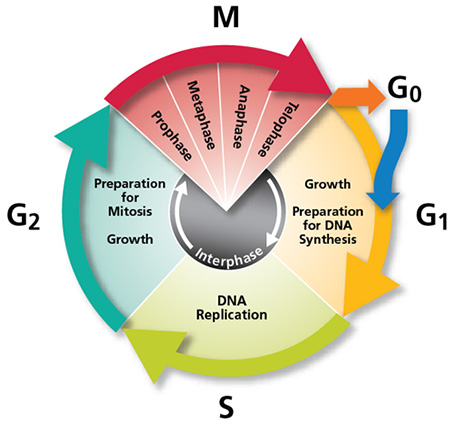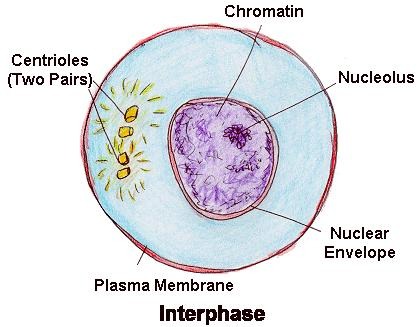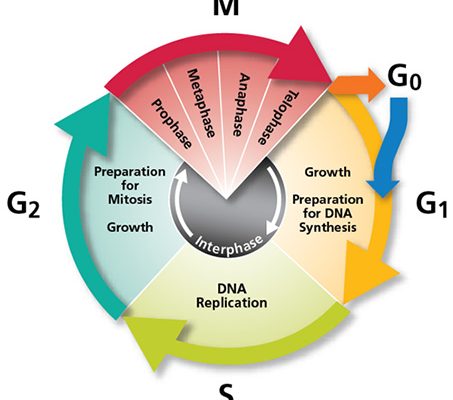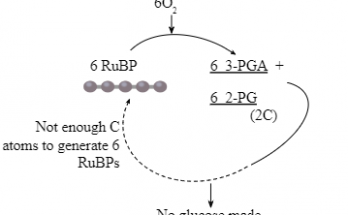What is Cell Cycle?
Cell cycle – Divide Grow and Redivide
The cell cycle is a series of events that take place in a cell leading to the duplication of its DNA and the subsequent division of the cell to produce two daughter cells.
In order for a Cell to divide, it must complete several important tasks.
The cell must grow, synthesize materials like proteins, RNA, etc., and duplicate its DNA before physically splitting into two daughter cells.
Cells perform these tasks in an organized, predictable series of events in the cell cycle.
Cell Cycle Diagram

2 Phases of Cell Cycle
- Interphase- It is a non Dividing phase
- M- Phase (Mitosis)
Interphase- Cell Cycle’s Longest Phase

- The two daughter cells produced from a mother cell are relatively small, with a full-sized nucleus but relatively little cytoplasm.
- These cells are said to be in interphase. During this phase, they prepare for the next cell division and grow to the same size as their mother cell.
- Since no change in chromosomes is visible externally during the interphase, formerly it was called the ‘resting phase’ of the cell. But in reality it is not true as the cell is quite active during interphase in synthesizing more DNA.
3 Phases of Interphase
The Interphase itself has three phases –
- First Growth Phase- G1 phase
- Synthesis phase
- Second Growth Phase.
First Growth Phase (G1 phase)
RNA and proteins are synthesized and the volume of cytoplasm increases.
Mitochondria (in animal cells) and chloroplasts (in plant cells) divide these two organelles have their own DNA.
In the late G phase, all cells must follow one of the two paths. They may either withdraw from the cell cycle and enter a resting phase (R) or start preparing for the next division by entering the next synthesis phase (S).
Synthesis Phase (S- Phase)
More DNA is synthesized, the chromosomes are duplicated.
Formation of the new DNA
- During the S-phase of the interphase, each DNA molecule (i.e. the chromosome) duplicates in readiness for their equitable distribution in the two daughter cells during mitosis.
- For replication, the DNA double helix opens at one end, making the two strands free to which new strands begin to form and the process continues in a sequence for the whole length of the DNA.
Second Growth Phase (G2 Phase)
- This is a shorter growth phase, in which RNA and proteins necessary for cell division continue to be synthesized.
- Now the cell is ready to undergo cell division and enter the dividing phase of the cell cycle.
- After the dividing phase gets completed, the newly formed daughter cells enter into interphase again and in this way the cell cycle goes on and on.
M- Phase (Mitosis)
In Mitosis the Cell Divides in two daughter cells each having a nucleus containing the same number and kind of chromosomes as the mother cell.
Mitosis is completed in 2 Steps
- Karyokinesis
- Cytokinesis
Also Check- Why is Meiosis not a part of the Cell Cycle
Also Check – 12 Important Significance of Mitosis
Also Check – 5 Important Significance of Meiosis
Also Check – 7 Important Difference Between Mitosis and Meiosis


One Comment on “With the help of Suitable Diagram Describe the Cell Cycle”